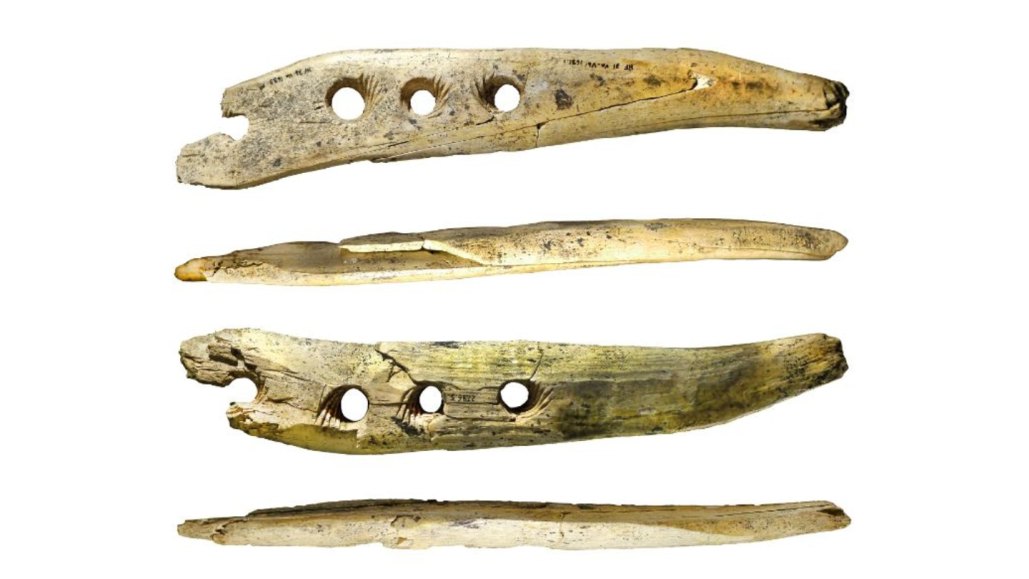Ancient Rope-Making Revealed through a Four-Holed Ivory Artifact

An ivory tool made from mammoth tusk discovered in central Europe offers insights into how Stone Age people collaborated to create robust, thick ropes. During an excavation at the Hohle Fels Cave in Southwestern Germany in 2015, 15 mammoth ivory fragments were found, which were later reassembled into a nearly-complete rope-making tool. This rare find measured approximately 20 centimeters long and had four concentric holes that had carved spirals, researchers Nicholas Conard and Veerle Rots reported in a Science Advances publication on January 31.
The ivory pieces were found among Stone Age tools and relics linked to the ancient Aurignacian culture of Eurasia. Radiocarbon dating of animal bones indicates that these discoveries are likely between 35,000 to 40,000 years old.
To determine the potential purposes of the tool, the researchers consulted past research but were not convinced by theories suggesting that such ivory artifacts were used for rituals, or for working leather or straightening wooden shafts. Microscopic signs of wear and plant residue on the artifact found at Hohle Fels and another earlier find suggested that plant fibres were pulled through the carved holes using the spiral grooves, indicating the tool's use for rope making. This aligns with evidence that European Neanderthals were producing strings between 52,000 and 41,000 years ago.
The research team then conducted rope-making tests using replicas of the ancient tools, made with various materials such as wood, animal bones, a split warthog tooth, and bronze. They found that a team of four or five people could produce five meters of sturdy, flexible rope within ten minutes with this method. They discovered that cattail leaves were especially effective for making rope.
Despite these significant findings, the researchers acknowledge that there's still much to learn about ancient rope production methods. However, as Conard stated, this is the first time that documented artifacts likely used for rope making have been identified and had their functions demonstrated.




